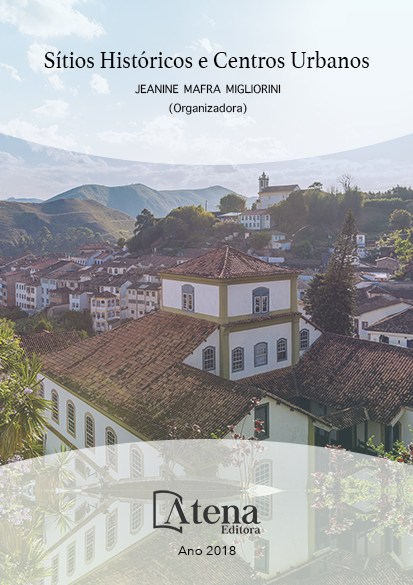
PAISAGENS DA MEMÓRIA: INFORMAR PARA PRESERVAR
As Praças Históricas de Natal
apresentam acelerado processo de
descaracterização, embora inseridas no
“Conjunto Arquitetônico, Urbanístico e
Paisagístico de Natal”, tombado em 2014 pelo
Instituto do Patrimônio Histórico e Artístico
Nacional (IPHAN). O processo de salvaguarda
iniciou em 2008, reconhecendo marcos
arquitetônicos, urbanísticos e paisagísticos
nos bairros da Cidade Alta e Ribeira, os mais
antigos da cidade. No entanto, para que esse
conjunto se torne de fato um patrimônio, é
necessário que os habitantes o reconheçam e
desenvolvam um sentimento de pertencimento.
Assim, é fundamental informar a população,
chamando atenção para a necessidade de
preservar a ambiência e atributos paisagísticos
do conjunto tombado. Esta ideia motivou a
pesquisa “Paisagens da Memória: em busca do
passado nos jardins natalenses”, desenvolvida
no Departamento de Arquitetura da UFRN entre
2013 e 2016. Este artigo resulta do esforço dos
pesquisadores para a divulgação do material
produzido na pesquisa, um inventário que
registra as transformações ocorridas nesses
locais e reconstrói em realidade virtual os vários
aspectos desse Conjunto ao longo do tempo.
Para tanto, foi construído um sítio eletrônico
na rede mundial de computadores internet,
que permite divulgar o acervo e incorporar
novos dados. Assim, se pretende informar
a população sobre o passado e o presente,
principalmente dos espaços livres inseridos no
conjunto tombado, bem como abrir um canal de
comunicação com os visitantes, pesquisadores
e demais interessados. A realidade virtual
permite mergulhar na história e favorece a
preservação da memória urbana, o que pode
significar uma oportunidade a mais dos bens
patrimoniais serem preservados.
PAISAGENS DA MEMÓRIA: INFORMAR PARA PRESERVAR
-
DOI: Atena
-
Palavras-chave: Tombamento; Educação Patrimonial; Realidade Virtual.
-
Keywords: Preservation; Patrimonial Education; Virtual Reality.
-
Abstract:
The Historical Squares of
Natal present an accelerated process of
decharacterization, although inserted in the
“Architectural, Urban and Landscape Set of
Natal”, registered in 2014 by the National
Historical and Artistic Heritage Institute
(IPHAN). The safeguard process began in
2008, recognizing architectural, urban and
landscape landmarks in the upper and lower
parts of Cidade Alta and Ribeira neighborhoods.
However, for this group to become in fact an
asset, it is necessary that the inhabitants recognize it and develop a sense of belonging.
So, it is fundamental to inform the population, calling attention to the need to preserve
the ambience and landscape attributes of the listed structure. This idea motivated the
research “Landscapes of Memory: searching for the past in natal gardens”, developed
in the Department of Architecture of UFRN between 2013 and 2016. This article results
from the researcher’s efforts to disseminate the material produced in the research, an
inventory that register the transformations occurring in these places and reconstructs
in virtual reality the various aspects of this set along the time. In order, an electronic
website has been built on the worldwide internet computer network, which allows the
dissemination of the collection and the incorporation of new data. This way this work
aims to inform the population about the past and the present, especially of the free
spaces inserted in the listed set, as well as open a channel of communication with
visitors, researchers and other interested people. Virtual reality allows us to immerse
ourselves in history and favors the preservation of urban memory, which can mean an
additional opportunity for patrimonial assets to be preserved.
-
Número de páginas: 15
- Paulo José Lisboa Nobre
- Isaías da Silva Ribeiro
- PAULO JOSÉ LISBOA NOBRE


